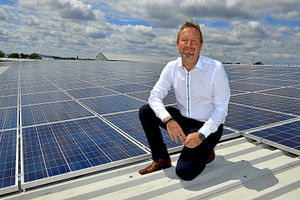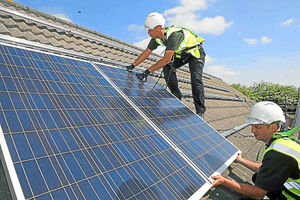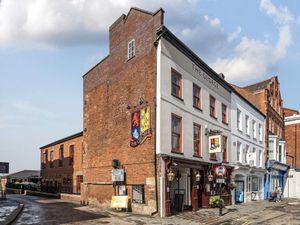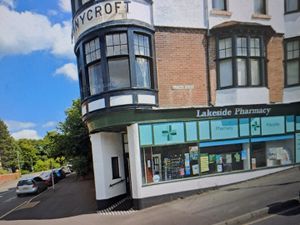Video: Massive solar farm where few will ever see it – on Shrewsbury factory roof
Hundreds of new solar panels have been installed by a county manufacturer – but you'll almost certainly never clap eyes on them.
The thorny issue of where to locate solar farms has seen some people saying businesses' roofs would be better than farmers' fields. Salop Design, in Shrewsbury, has completed a mammoth scheme on top of its factory.

The 950-panel installation atop the metalworking company's plant in Brixton Way is among the largest roof-based solar farms in the county, and cost a six-figure sum.
At present, Salop Design, which has also invested in a £1.5 million, state-of-the-art powder coating line, is spending £30,000 a month on its energy costs.
That will be cut by more than 10 per cent when the new system starts up this weekend. Director Chris Greenough said: "Energy is our third biggest spend, so we had been looking at it for a while.
"From speaking to the guys that installed it, they don't know of another roof-based system in Shropshire that's this size.
"It really does look fantastic."
The system will save 88 tonnes of carbon a year, or 1,760 tonnes over the 20-year lifespan of the panels – the equivalent of 10,566 double decker buses or 9.5 million air miles.

Meanwhile, Shrewsbury's MP has suggested that house builders should be given incentives to make new homes face south in order to make rooftop solar panels as energy-efficient as possible.
Daniel Kawczynski made the call in the House of Commons during a debate with Andrea Leadsom, the Minister of State for the Department of Energy and Climate Change.
The minister told Mr Kawczynski that there were already financial incentives to encourage efficient solar panel use, with income dependant on the amount of electricity generated.
But the Shrewsbury & Atcham MP's idea was broadly welcomed by James Wood, a director of Shrewsbury-based developers Saxonby, who said it offered "quite a lot of sense".
"It's about incentivising the building chain," he added. "How can we build more houses more efficiently? If there was an incentive to get them facing at the right angle it could make a big difference to the results of solar. Even degrees can make a difference."
Mr Wood said he could foresee some issues where getting the angle right for maximum solar panel advantage could mean fewer homes on a particular site.
But he said people were increasingly concerned about their utility bills, and if new homes – particularly those in the rental or social sector – were made as energy-efficient as possible, an initial loss would be offset by benefits that could be felt for many years afterwards.
But Vic Johnson, founder of Bridgnorth-based Johnson Design Partnership, feared that new rules could add to an already complicated situation. He said: "Any scheme that is designed to maximise orientation to the sun will no doubt lead to a number of benefits, including a potential reduction in overall energy use.
"However, architects and builders already have a series of complex drivers or issues to deal with when considering new projects.
"Do we really need another hurdle added to the mix, and what's to say the incentive will not arrive in the shape of cheaper/less efficient solar panels?
"Surely there has to be a better way of harnessing solar power?
"In my opinion, it would be better to look at the bigger picture and incentivise builders to design innovative, energy efficient homes rather than merely adapting the typical spec house model that appears to be the norm."





